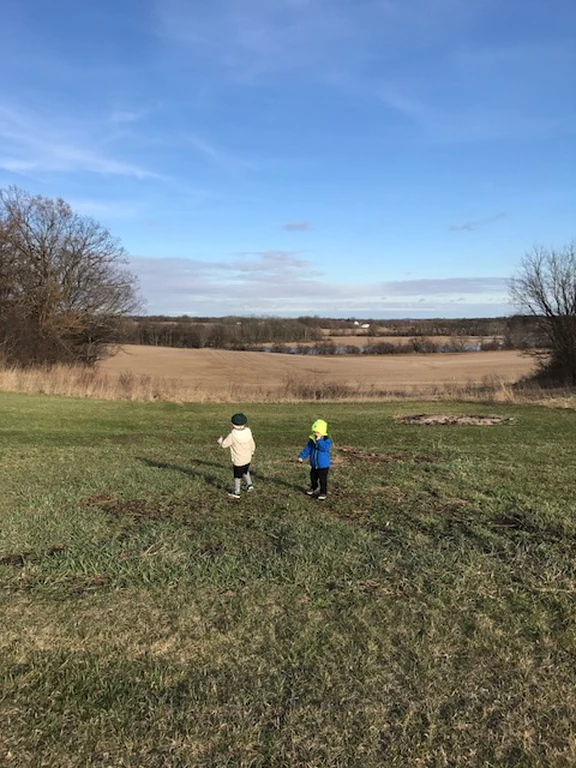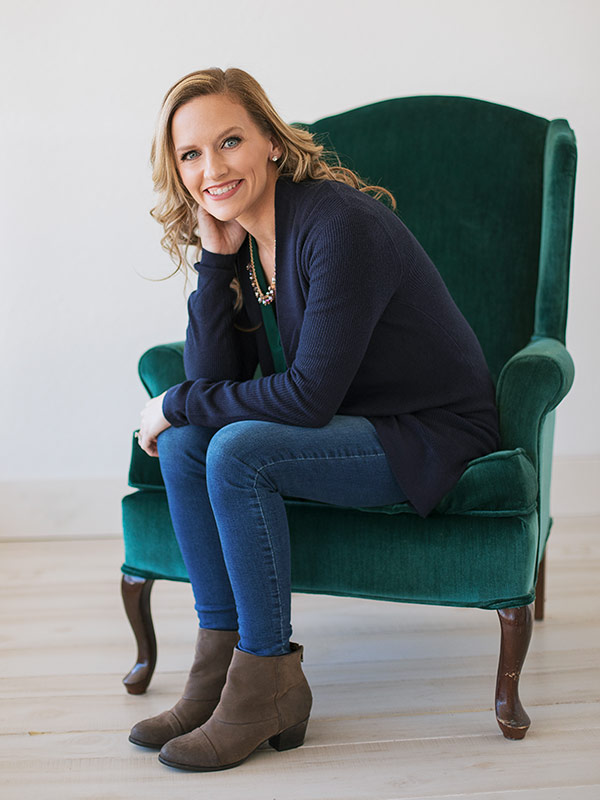One thing that I decided right away for this blog is that I want to be sure that I do NOT write boring content. So here I am getting ready to type week two’s topic – “the bidding process,” and all I can think about is how it’s likely one of the most boring parts of the building process for the customer. So boring. As the one ready to build a new house, here you are all excited because you finally landed on a house plan that you really love, all of your momentum is moving forward as you dream about decorating all of the rooms, and you are so ready to get moving that you’d be wiling to grab a shovel and start digging yourself if you had to. But then there’s that little detail… figuring out the cost.

Here are my kiddos checking out our lot and talking about where our new house will be!
On the builder end, this part of the process is far from boring. There is so much to do and so much to figure out. So often people say “what’s the price per square foot number to build a house these days?” I know that Jon (my dad) never likes answering that question because it’s never that easy. The reason is because there are about a million factors that can influence the answer. We can ballpark a square foot number for people, but things like owner selections, site conditions, and the current market have huge influences on this. We don’t like to leave anything vague when we’re talking to our clients about something as important (and expensive) as their house, so we take things a step further.
First, we ask clients a series of detail questions based on their plan – mainly, how they envision that they’d want their new home to be. Do they want stained and varnished woodwork or painted trim? What type of flooring do they want for each room? Do they plan to choose solid surface countertops in the kitchen? And so many more questions. We use this as a baseline, knowing that none of the answers are set in stone, but merely a starting point for bidding. We’ve been told by clients before that we ask A LOT of questions. We take it as a compliment though because it means that we’re being thorough. Thorough enough that we’re giving you a complete price. We sometimes caution clients who get multiple bids and challenge them to make sure the other bids are as complete and account for everything that will be put into a new home. There have been times when our proposed price seems high initially, only to be realized by our clients that the lower bids left out factors that would inevitably show up on their final bill as “extras” for them to pay. We feel like it’s the fairest for our clients and for us to be complete right from the start. In fact, we’ve built a reputation on giving our clients an honest proposal showing what it will really cost to build their home. From the answers to the questions we create a specification sheet that we send out to our subcontractors with the house plan. We get the plan sent out and then… we wait. I know, I know – I said this part wasn’t boring at all for us, but maybe just a little bit.

Checking out the lot!
Depending on the time of year and how busy things are for our subcontractors, this part can take quite a few weeks. The reason being that our subcontractors are always super busy completing jobs, and they’re busy because they’re good at what they do. We think they are the best (another blog post entirely) and we know it’s worth it to wait for their number because we only want the best subcontractors working on your house. Another reason this takes a while is because we ask them to be pretty specific in their pricing. For our materials/lumber subcontractor, this even means accounting for how many boxes of nails it will take to build the entire house. It’s a daunting task just thinking about it!
Once all of the bids are back in to us, we compile the numbers, figure out the labor it will take, and present a proposal to our client. The cost in our proposal is accurate to the best of our abilities based on bids. For items that have varying costs which depend on unknown site conditions at the time or owner selections, these costs are put into allowances. Allowance items are super important for clients to understand as they go into the building process. An allowance item is best described as a category in the contract which may have a variable final cost depending on specific selections by the owner or site conditions on the lot which are not known until the process has begun. Common examples of this are cabinets, countertops, excavating, flooring, etc. If during our initial meeting you decide that you will probably want granite kitchen tops (and this is what we include in our bid), but then when it comes down to making the final decision you go with Quartz kitchen tops, this will affect the actual cost and will be reflected in the allowance. So, the allowance figures that we have in the proposal are all figured into the proposed cost, but we know that they could potentially change. If our clients end up choosing a selection that is less than what we used in our initial bid, then they would be credited for the difference on their bill. If they choose something that is more, then the extra cost is added.
Wheww… once the cost is figured out and approved by the client, it’s on to something way more fun – getting started! If you’re working with an accredited builder (which we would ALWAYS suggest that you do) then your builder will pull the permits for your project and get everything lined up to start digging!
#socknessbuilders #newconstruction #remodeling #buildingprocess #miltonwihomebuilder #southernwihomebuilder #rockcountywihomebuilder #whentocallabuilder #fromthegroundup #readytostartbuilding #buildyourdreamhome #custombuild #listendesignbuild #customhomebuilder #thebiddingprocess #housebidding


